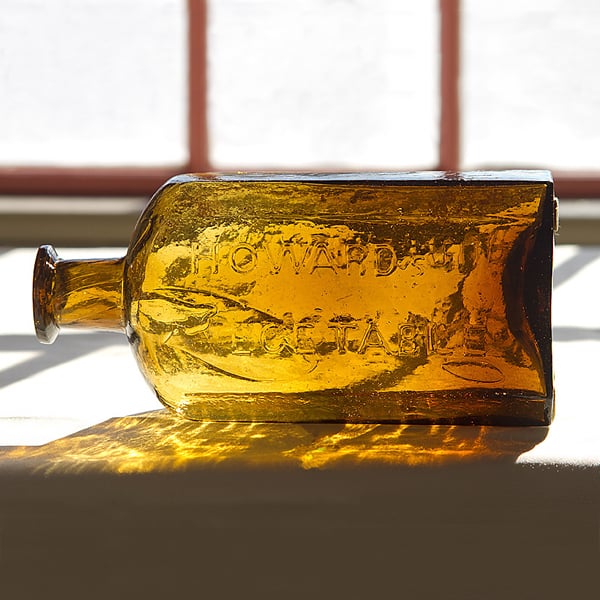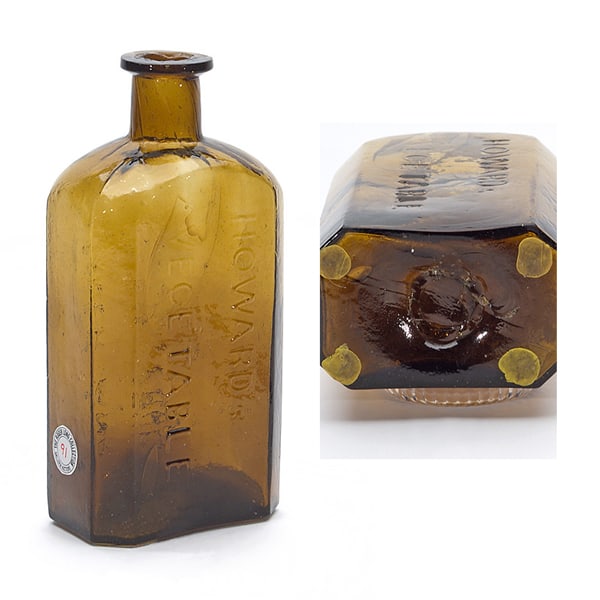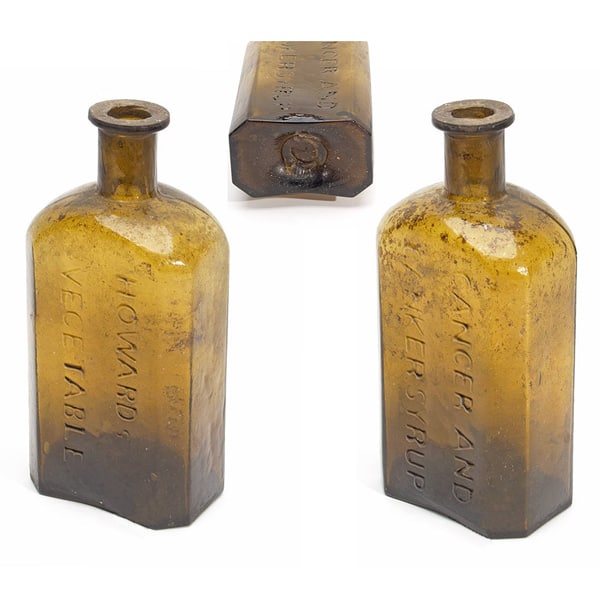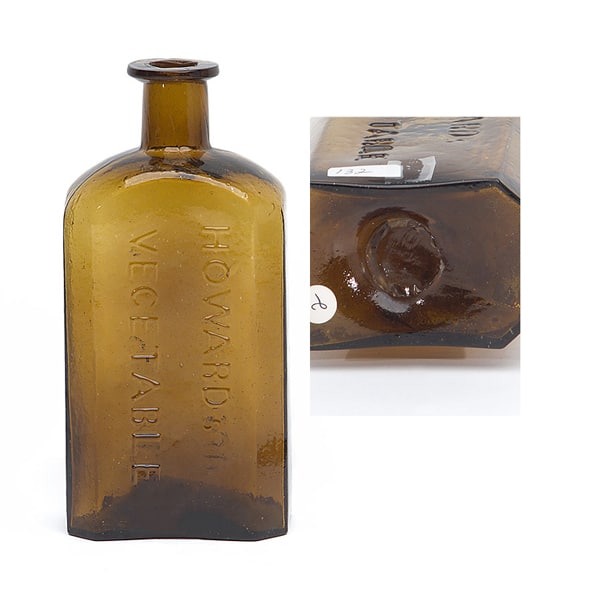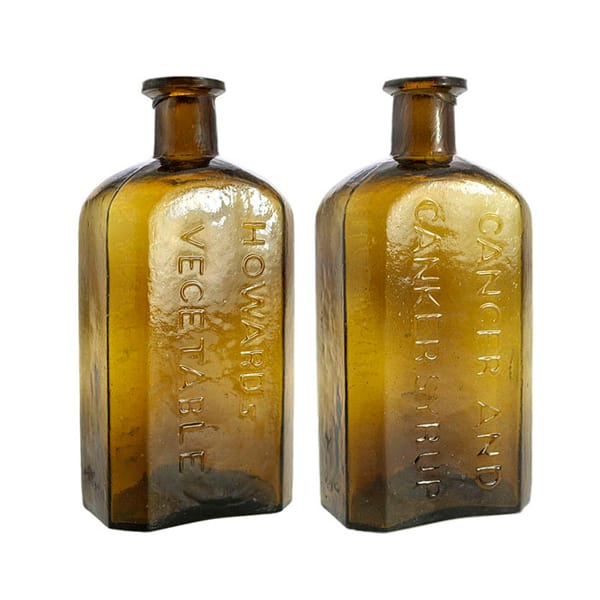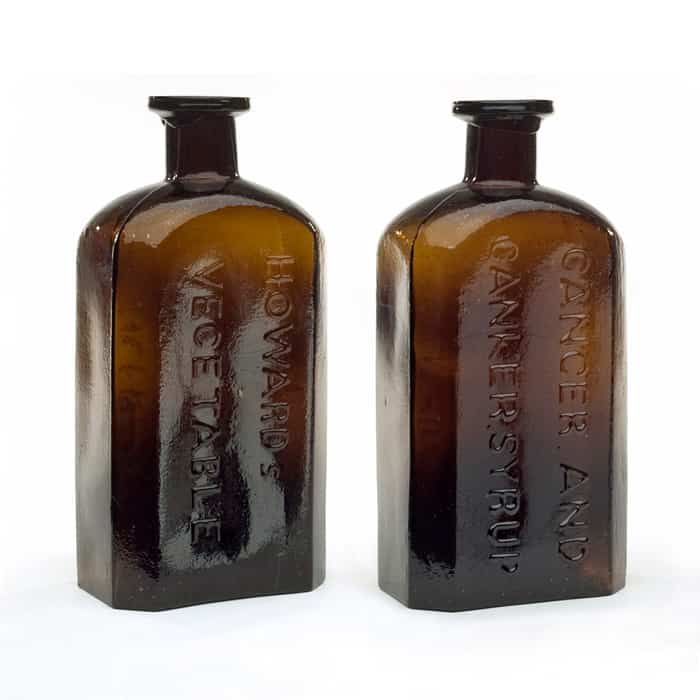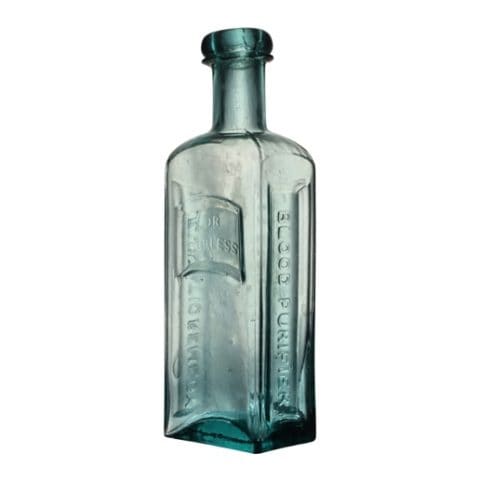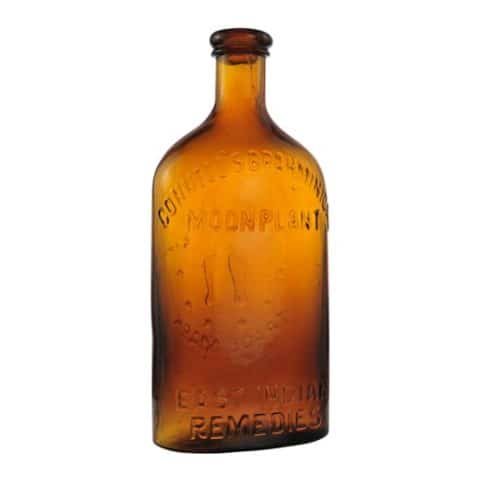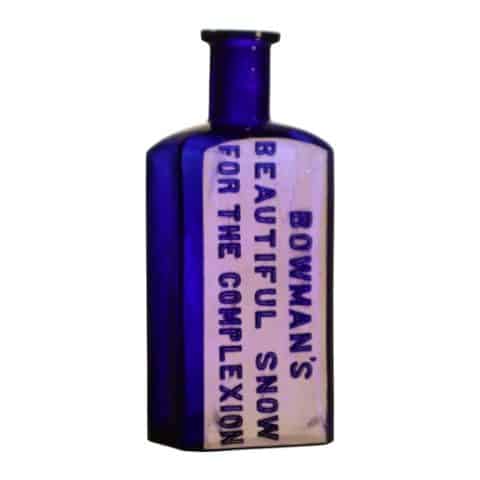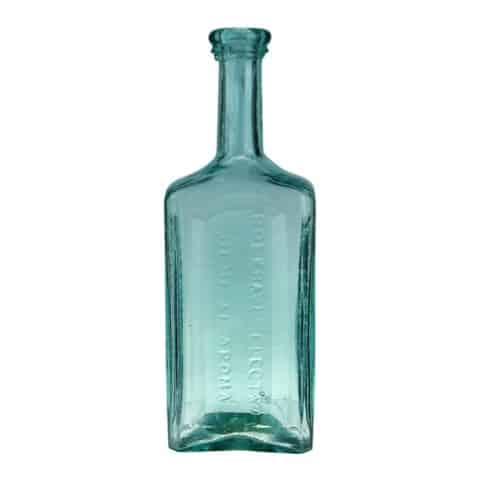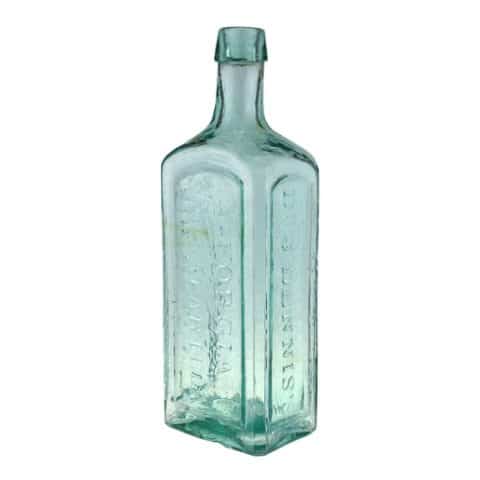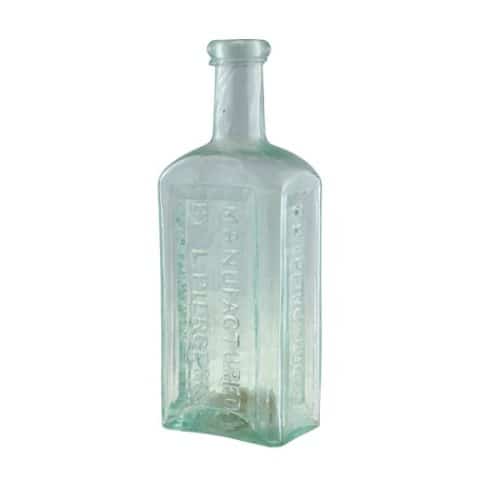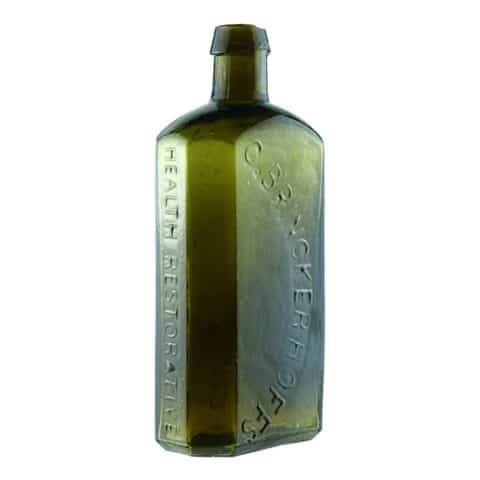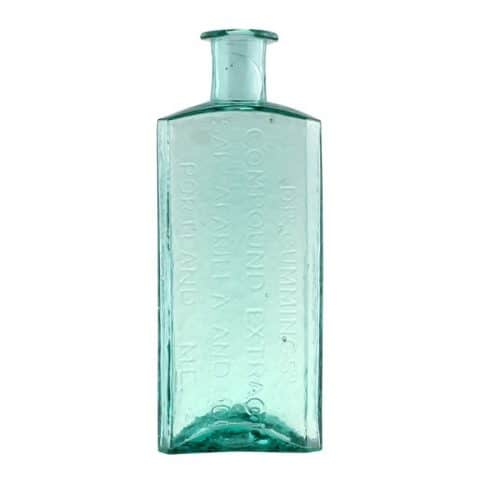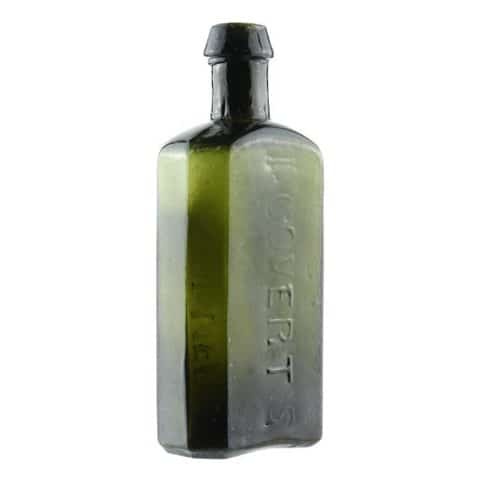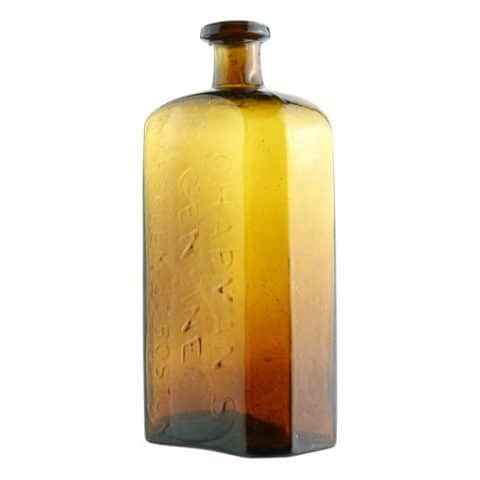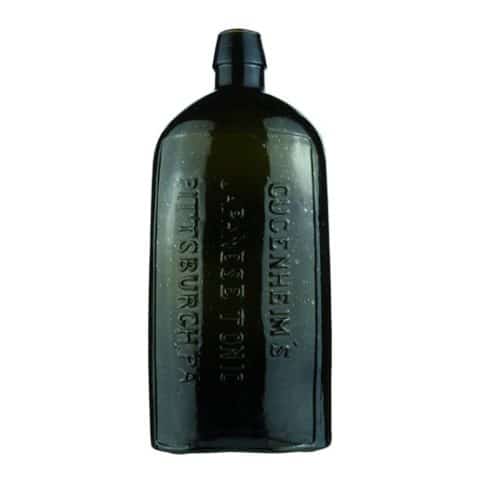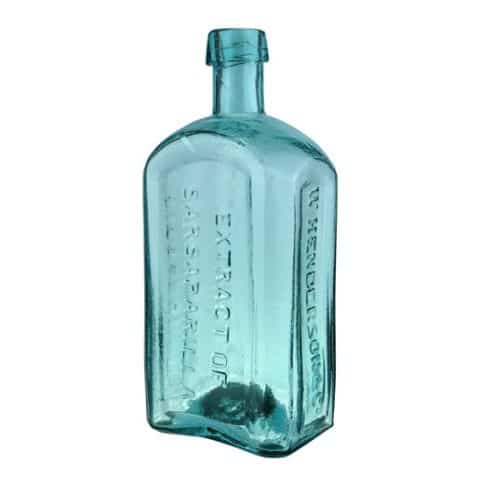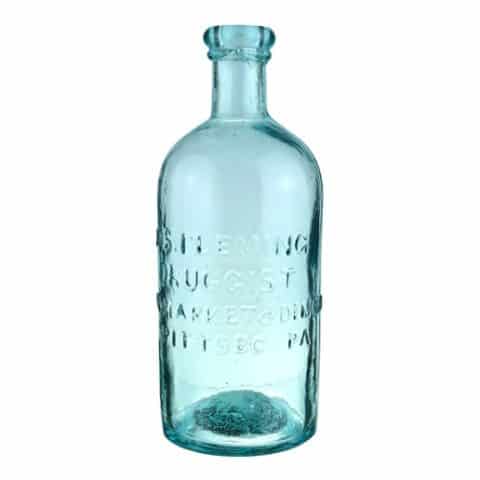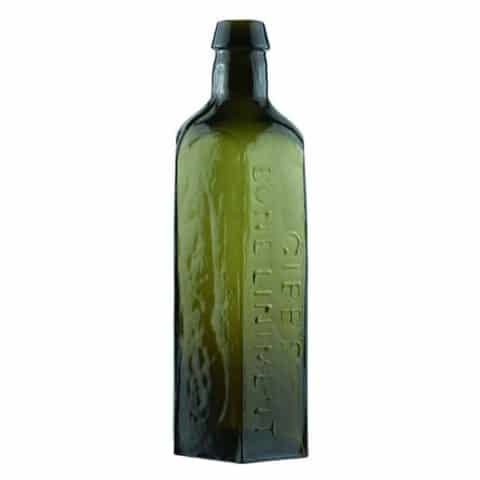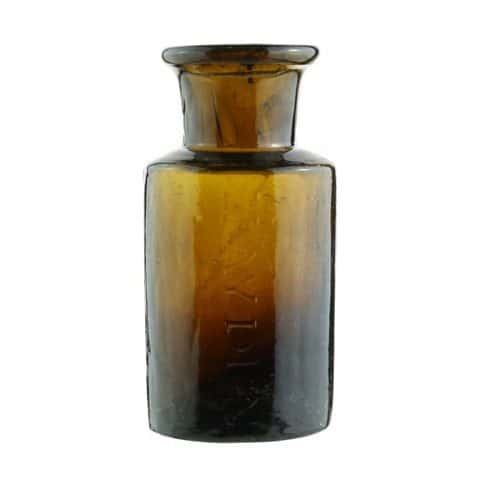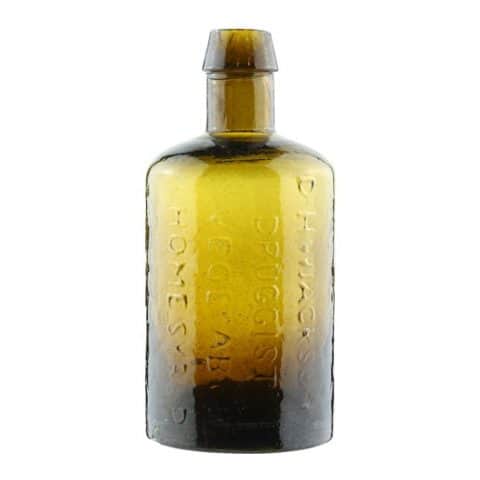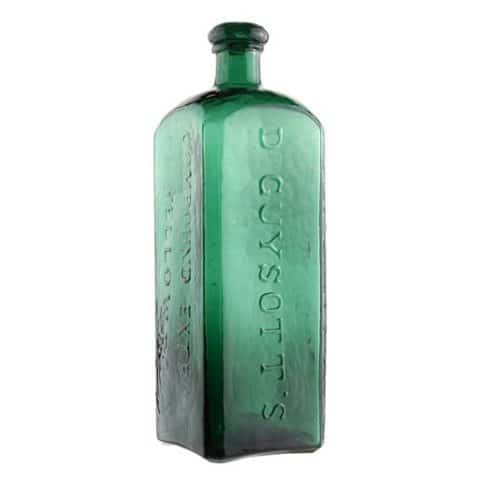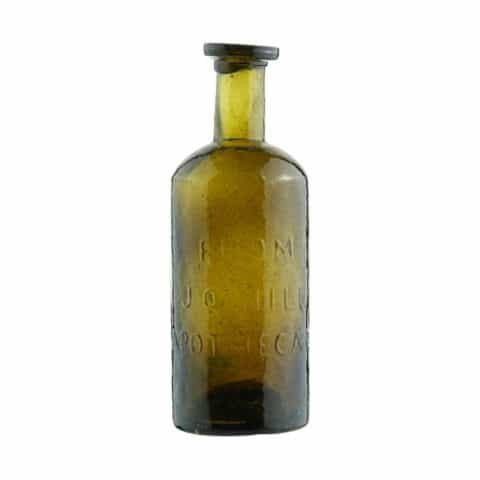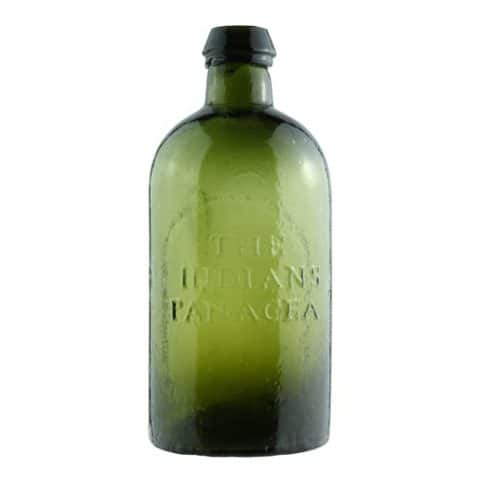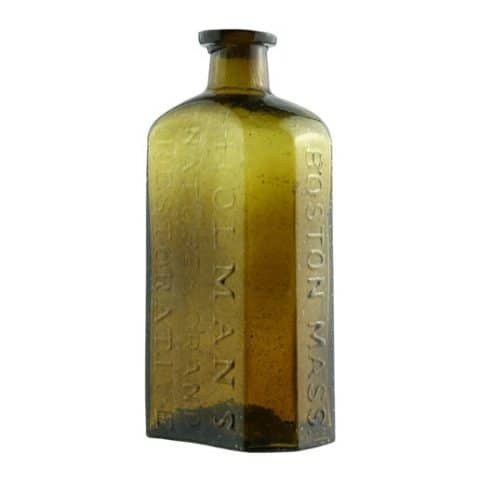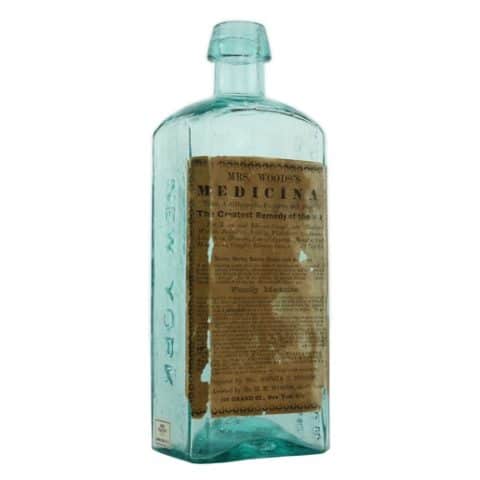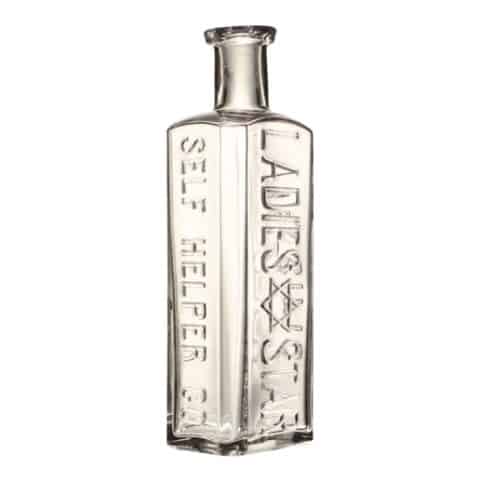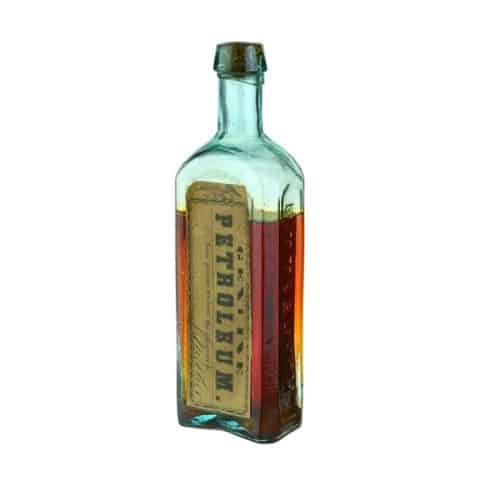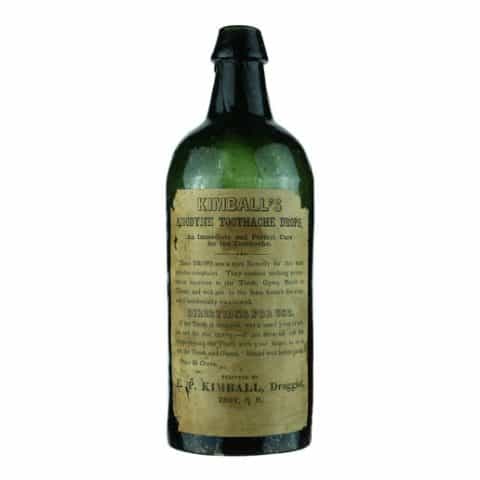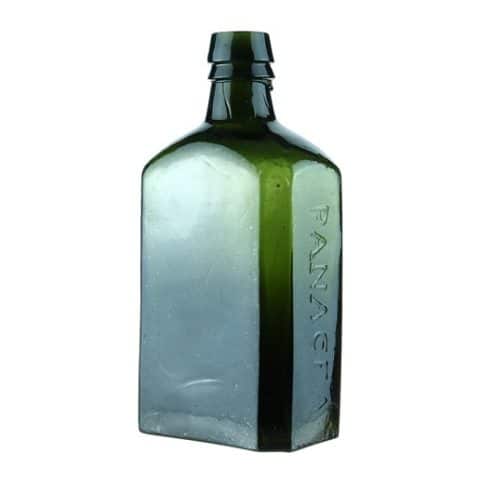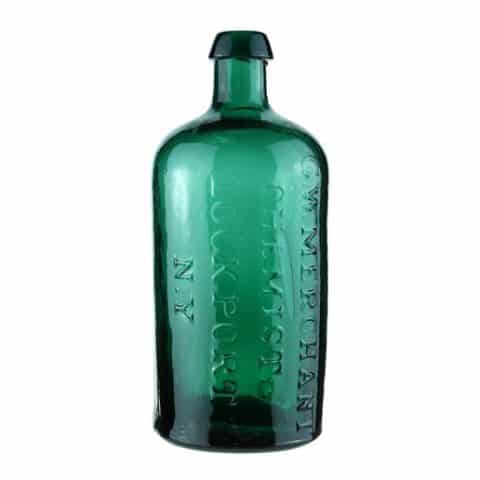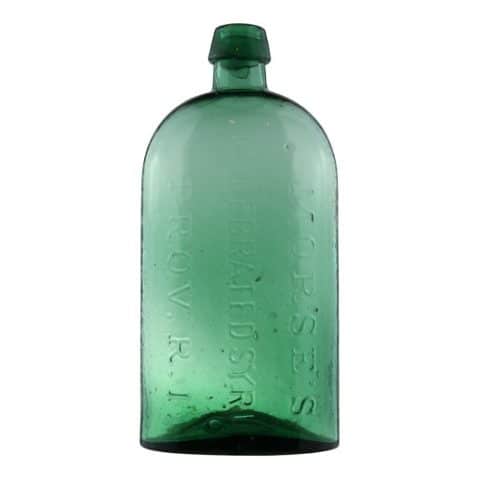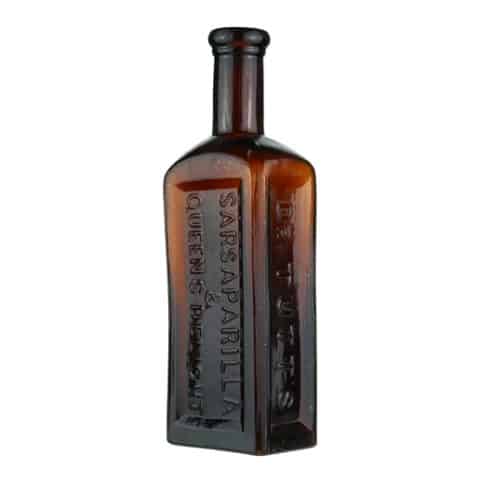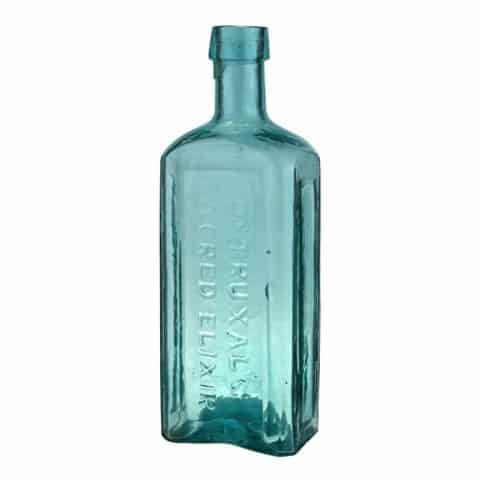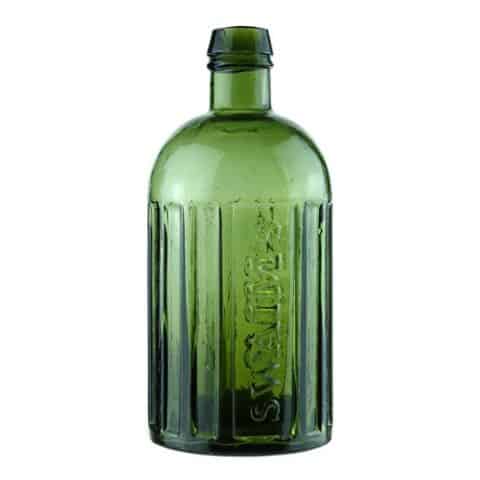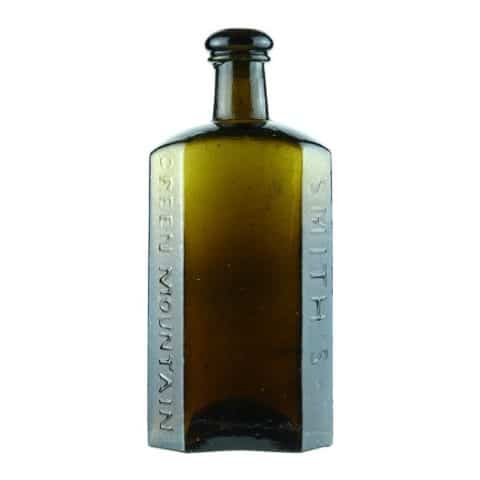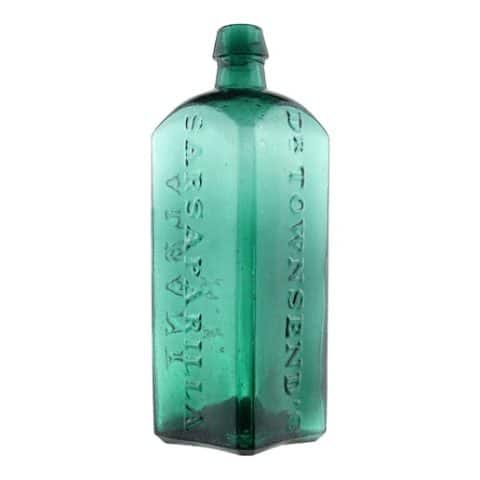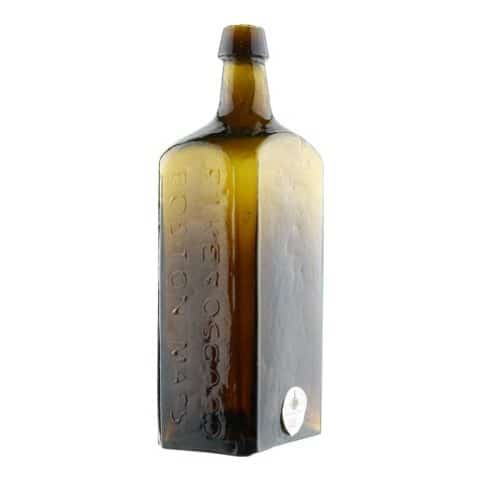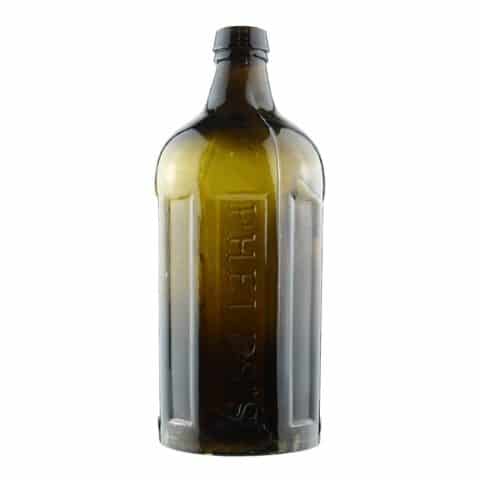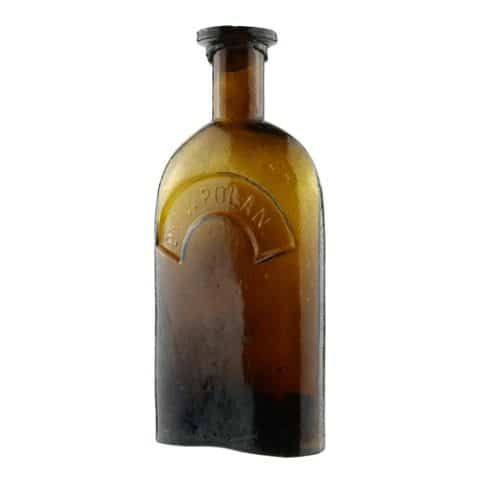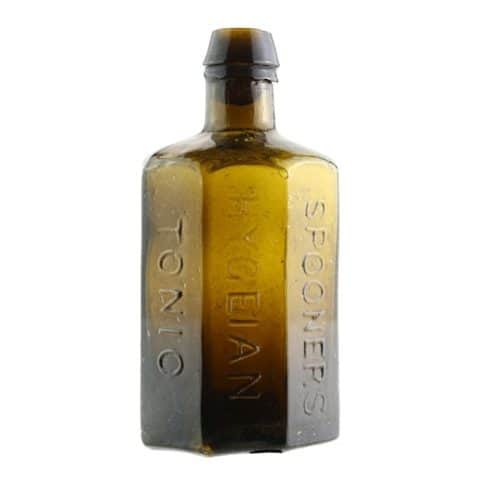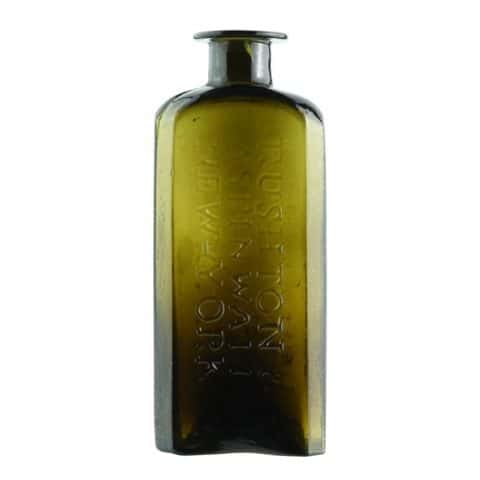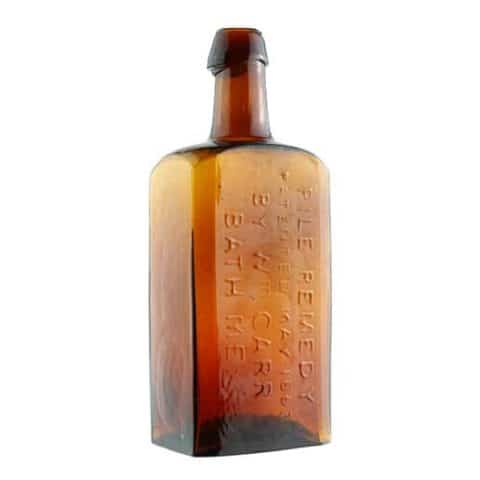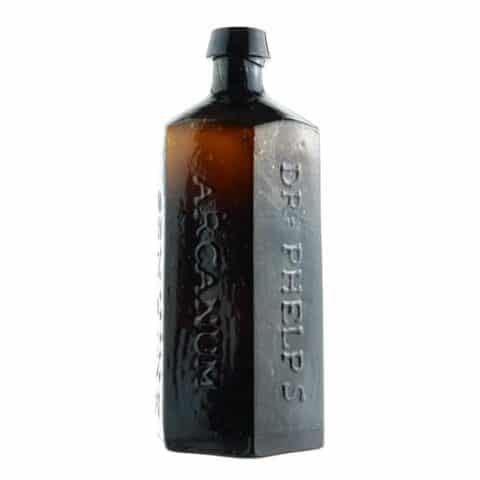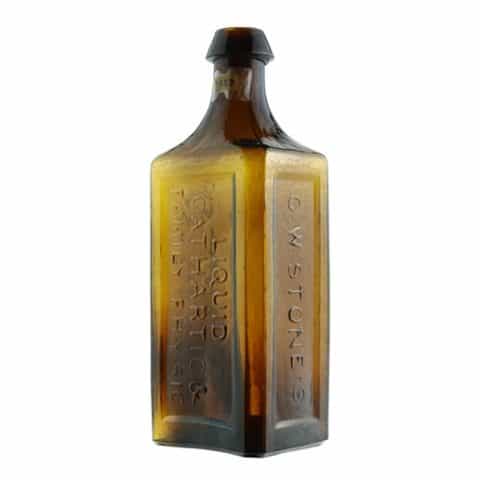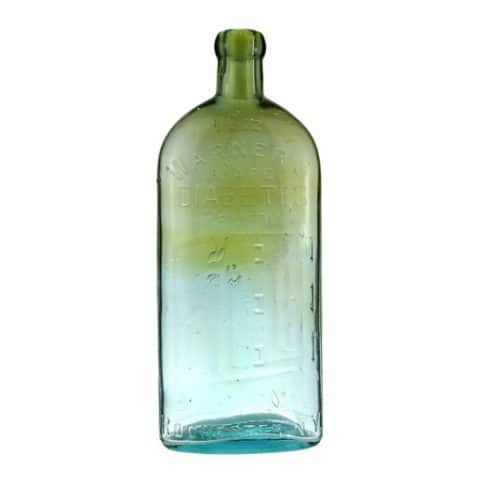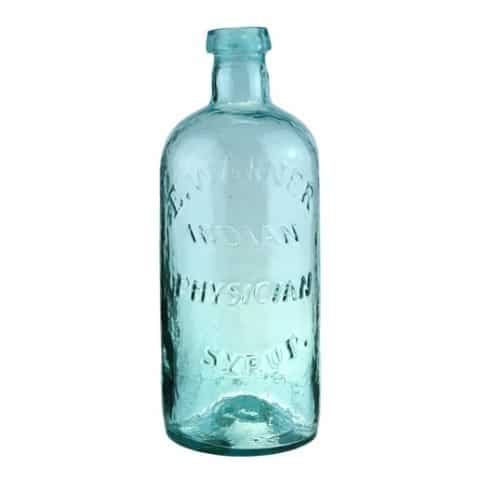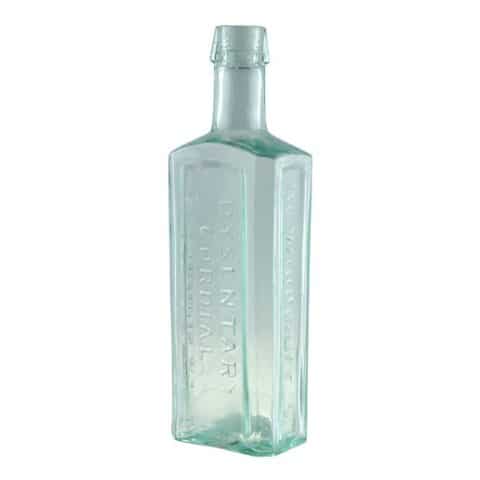Howards Vegetable Cancer And Canker Syrup
Howards Vegetable
Cancer And Canker Syrup
D. Howard, Randolph, Massachusetts
James O. Boyle & Co., Boston, Massachusetts
Golden Amber with an Olive Tone Rectangular Medicine
Provenance: Richard S. Ciralli Collection
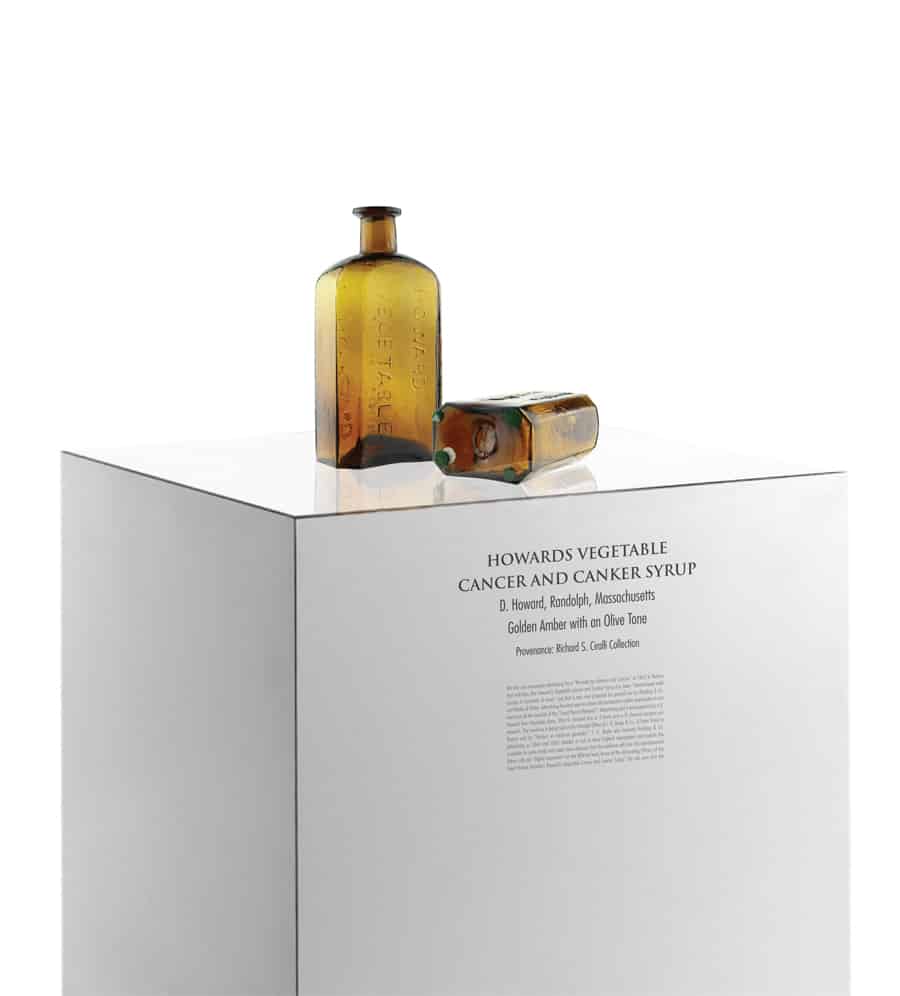
Our rare Civil War-era “Howard’s Vegetable Cancer and Canker Syrup” bottle came from an old-time New England collection. The consignor notes that only a handful is known with an open pontil. This example has great color and clarity of glass and is certainly among the best of its type representing one of Stoddard, New Hampshire’s best examples of glassblowing.
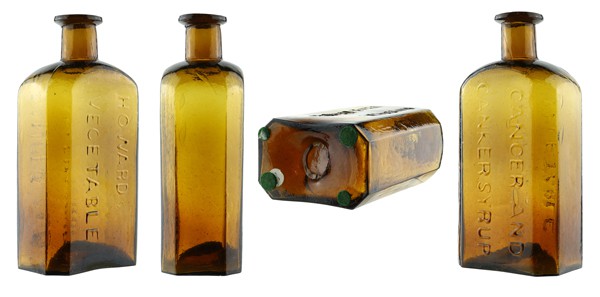
The 7-3/8 tall bottle is rectangular with wide beveled corners, has arched shoulders, and an applied square collared mouth. When looking at the front panel, there are two lines of embossed, sans-serif copy that are flush left reading from shoulder to base ‘HOWARDS VEGETABLE.’ The “s” of “Howards” is very small. There is no apostrophe before the “s.” The opposite side is embossed in a similar manner ‘CANCER AND’ and ‘CANKER SYRUP’ in two lines. The copy is centered and there is very little word-spacing between “Canker” and “Syrup.”
Howard’s Vegetable Cancer and Canker Syrup
In the 1850s, Boston was the epicenter of popular cure-all medicines and their proprietors such as Rowland’s Tonic Mixture and Rowland’s Compound Syrup of Blackberry Root, put out by Wilson, Fairbanks & Co., Dr. Spear’s Great Indian Medicines, E. D. Spear, M.D., and Redding’s Russia Salve, The Boston Remedy by Redding & Co., and many others who dominated newspaper columns and touted their success. The proprietors of Howard’s Vegetable Cancer and Canker Syrup capitalized on this success before them.
We first see newspaper advertising for a “Remedy for Humors and Cancers” in 1862 in Boston, Mass. that indicates that Howard’s Vegetable Cancer and Canker Syrup had been “administered with success in hundreds of cases” and that it was now prepared for general use by Redding & Co. and Weeks & Potter, both operating in Boston.
Advertising the next year in various Massachusetts outlets quadruples in size and touts all the benefits of the “Great Humor Remedy.” Advertising said it was prepared by a D. Howard from Randolph Mass. Who D. Howard was or if there even was a D. Howard escapes our research. The medicine is being sold at the proprietor’s principal office of J. O. Boyle & Co., 8 State Street in Boston, and by “dealers in medicine generally.” J. O. Boyle & Co. was formerly the previously mentioned Redding & Co.
Advertising in 1864 and 1865 doubles in size in New England newspapers and repeats the accolades in more words and notes more diseases that the medicine will cure. The advertisement below calls out “Highly Important! Let the Afflicted read, Know of the Astounding Efficacy of the Great Humor Remedy! Howard’s Vegetable Cancer and Canker Syrup.” The ads note at the bottom that the bottles are being sold for “$1 per Bottle or $5 for Six Bottles.” Advertising stops late in 1865, the same year as the Civil War ended.

The following editorial matter came from the book Southern History of the War, The Third Year by Edward Alfred Pollard, 1865:
“There are advertisements by the column of miraculous cures of almost every disease imaginable, invariably attested by the certificates of “clergymen.” These medical advertisements are irrepressible, effulgent, and difficult to be epitomized. Here we have Cancer and Canker Syrup, Amboline (for the hair), White Pine Compound, Howard’s Vegetable Syrup, “Ironized” Catawba Wine, Indian Emmenagogue, Cherokee Injection (with a picture of a big Indian), Dr. Wright’s Regenerating Elixir, Hungarian Balsam, Chloasma, Pabulum Vitæ, Medical Hydrokonia, &c., &c. A savory list of quack compounds surely, with illustrative wood-cuts of women covered with hair by the use of “Amboline,” etc., and regenerated skeletons “after taking” the nostrum, and all attested by the sacred testimony of clergymen, and other grateful bedridden saints, who invariably send for the second bottle.”
Randolph, Massachusetts
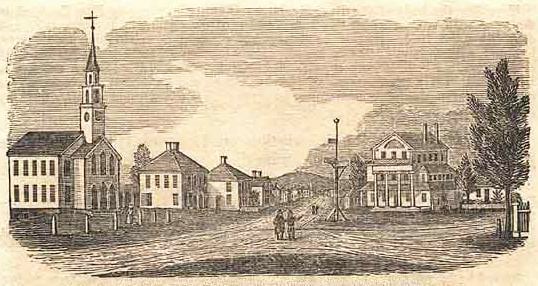
Randolph was once called Cochaticquom by the local Cochato and Ponkapoag tribes. The town was incorporated in 1793 from what was formerly the south precinct of the town of Braintree. According to the centennial address delivered by John V. Beal, the town was named after Peyton Randolph, first president of the Continental Congress. Randolph was formerly the home of several large shoe companies. Many popular styles were made exclusively in Randolph, including the “Randies.” At the time of Randolph’s incorporation in 1793, local farmers were making shoes and boots to augment household incomes from subsistence farming. In the next half-century, this sideline had become the town’s major industry, attracting workers from across New England, Canada, and Ireland and later from Italy and Eastern Europe, each adding to the quality of life in the town. By 1850, Randolph had become one of the nation’s leading boot producers, shipping boots as far away as California and Australia.
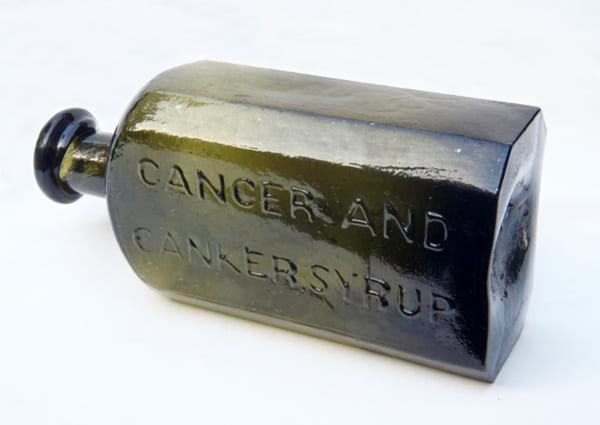
Primary Image: Howards Vegetable Cancer and Canker Syrup bottle imaged on location by Alan DeMaison, FOHBC Virtual Museum Midwest Studio
Support Image: Auction Lot: 83: “Howards / Vegetable / Cancer And / Canker Syrup” Medicine Bottle, a Stoddard glasshouse, Stoddard, New Hampshire, 1846-1860. Rectangular with beveled corners, bright golden amber with an olive tone, applied square collared mouth – tubular pontil scar, ht. 7 3/8 inches. L/P plate 12, #3 Great whittle and glass character. Beautiful color. Fine condition. Ex Roger Long collection. – Norman Heckler Jr. & Sr., Norman C. Heckler & Company, Auction #108
Support Image: Auction Lot 105: “HOWARD’S / VEGETABLE – CANCER AND / CANKER SYRUP”, (Odell, pg. 118), Massachusetts, ca. 1855 – 1865, medium yellowish ‘old’ amber, 7 3/8”h, iron pontil, applied mouth. An in-making 3/16” ‘V’ shaped chip is off the top edge of the lip. An outer edge of the lip has a factory fire-polish to smooth out roughness. Of the known examples only a small number have pontil scarred bases! – Jim Hagenbuch, Glass Works Auctions, Auction #153
Support Image: Auction Lot 35: “Howards / Vegetable” – “Cancer And / Canker Syrup” Medicine Bottle, a Stoddard glasshouse, Stoddard, New Hampshire, 1846-1860. Rectangular with beveled corners, bright olive amber, applied square collared mouth – tubular pontil scar, ht. 7 1/2 inches; (washable interior and exterior residue, 1/8 inch surface bubble on beveled corner has minor loss of cover glass). L/P plate 12, #3 This wonderful bottle is an attic find from Vermont. Aside from the minor surface bubble this bottle is in “attic” mint condition. – Norman Heckler Jr. & Sr., Norman C. Heckler & Company, Auction #159
Support Image: Auction Lot 84: “Howards / Vegetable” – “Cancer And / Canker Syrup” Medicine Bottle, a Stoddard glasshouse, Stoddard, New Hampshire, 1840-1860. Rectangular with beveled corners, brilliant medium yellow amber with an olive tone, applied square collared mouth – tubular pontil scar, ht. 7 1/4 inches; (2 inch slice crack starting at the pontil scar, a manufacturer’s flaw). N #311, PME pg. 181 Great Stoddard bottle. Beautiful medium color. Generally fine condition. Kris Kernozicky collection. – Norman Heckler Jr. & Sr., Norman C. Heckler & Company, Auction #101
Support Image: Example of an olive green Howard’s Vegetable Cancer and Canker Syrup with a round ring applied mouth, Antique-Bottles.net, Sandchip, January 2011
Support Image: “HOWARDs / VEGETABLE – CANCER. AND / CANKER. SYRUP”, New England, a Stoddard, NH glasshouse, 1860 – 1865. Medium-to-deep ‘old amber’, rectangular with wide beveled corners, large applied square collar – smooth base, ht. 7 ¼”, attic mint! A fantastic example of this scarce and desirable Stoddard medicine, outstanding condition, nice crude glass, almost no wear, and crisp strong embossing. Provenance: Joe Widman collection. Joe appreciated medicines that had outlandish claims, or ‘cured’ diseases such as cancer. And, he always strived to find great examples. A wonderful early Stoddard medicine, and not easy to find in this fine condition. – John Pastor, American Glass Gallery, Auction #31
Support Image: Southeastern View of the Central Part of Randolph (in Massachusetts), a woodcut print from John Warner Barber’s Historical Collections, 1839; published by Dorr, Howland & Company, Worcester, Massachusetts.
Join the FOHBC: The Virtual Museum is a project of the Federation of Historical Bottle Collectors (FOHBC). To become a member.

